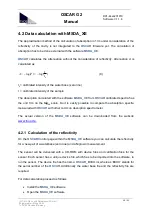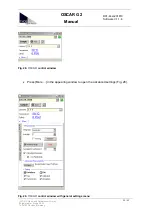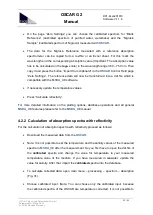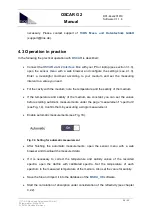
OSCAR G2
Manual
D01-44en201810
Software V.1.1.6
(C)TriOS Mess- und Datentechnik GmbH
Bürgermeister-Brötje-Str. 25
D- 26180 Rastede/Germany
55 / 62
5
Cleaning and servicing
Deposits (fouling) and dirt on the sensor are depending on the medium and the duration of
exposure in the medium. Therefore, the degree of contamination is depending on the
application. For this reason it is impossible to give a general answer how often to clean the
sensor.
The following rules and hints shall help to service the sensor correctly. Please note
that these instructions are referring to the sensor housing, not the cavity. The
cleaning and handling of the cavity is described later in this chapter.
During the
following cleaning procedure, the cavity needs to be properly close and prevented from any
liquids or cleaning agents to enter the inner part.
Damage caused by improper cleaning is excluded from the warranty!
5.1 Sensor housing cleaning
In general it is recommended to soak the sensor in a rinsing solution for a few hours to solve
hard dirt. To save the connector and be sure, that it is dry at every time, it is recommended to
use a dummy plug for the connector. If the sensor is heavily dirty, an additional cleaning with
a sponge may be necessary. Please inform yourself about the risks and the safety
instructions of the cleaning solution. If the sensor cannot be cleaned, like described above,
because calcifications are present, a 10% citric acid or acetic acid solution can be used. In
case of brownish dirt points of iron or manganese oxides debris, a 5% oxalic acid or 10%
ascorbic acid solution can be used to clean the sensor. Please do not use hydrochloric acid
under any circumstances. Even very low concentrations will affect stainless steel parts.
Additionally
TriOS Mess- und Datentechnik GmbH
warns against using strong acids, even
if the sensor has titanium housing.
For the cleaning of the windows between the cavity and the main housing, polish them with a
tissue and a few drops of acetone. Take care, that there are no fingertips on the windows.
During the cleaning a thin film can appear, which can be removed with a soft tissue or pure
water. Do not use any grinding cleaning solutions or blades to remove persistent dirt. To








































